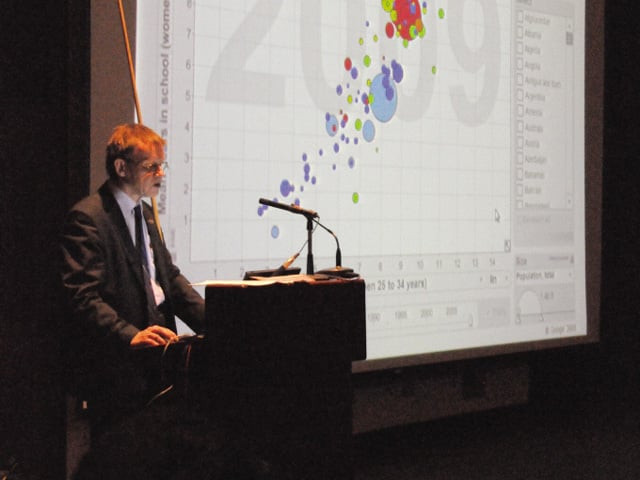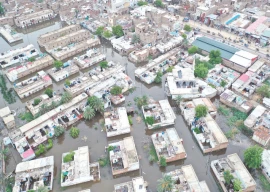
While improving its numbers in health care, especially child and maternal mortality, Pakistan is not progressing to its full potential, said international health professor Hans Rosling of Karolinska Institutet, Sweden, on Monday. Prof Rosling was speaking at a seminar on ‘Global Trends in Health Systems: Can We Reach MDG 4 & 5’ organised by the Aga Khan University.
Referring to the Millennium Development Goals (MDGs), he argued, they should not be seen as targets set in stone but rather a tool to measure a country’s progress in specified areas. Rosling, who prefers to be known as an “edutainer”, meaning he educates in an entertaining manner, disregards the United Nations classification for “developing and developed countries.”
In his nearly two-hour quirky and humorous presentation, the 62-year-old professor justified his arguments with the support of a series on info graphics, which depicted countries divided into three categories: low-income, middle-income and high-income. Pakistan, he pointed out, recently made its way to the lower middle income country slot.
According to Rosling, the resources available to a country and its international standing in healthcare are a tangible method of measurement as opposed to the cut and dry UN distinctions of the developing and developed world. “How can you label South Korea and Singapore as developing countries while calling Armenia and Albania developed countries today?” he said.
“In the UN if you are born a slave then you will always remain a slave but that philosophy doesn’t hold weight,” he told The Express Tribune. Supporting his argument further with the example of Bangladesh, Rosling said, Bangladesh is benefitting from its dense population by controlling infectious diseases and improving health and education with fewer resources. In comparison, Pakistan with its geographical constraints, such as its mountains, valleys and deserts, has made improving healthcare a significantly more difficult goal.
Compared to 1971 when Bangladesh was at least 25 per cent behind in health statistics — especially child and maternal mortality — than Pakistan, Bangladesh supersedes its neighbour today, he said. In fact, Rosling said, “Bangladesh has overtaken all South Asian countries with the exception of Sri Lanka in health.”
Another example Rosling used was of Vietnam, where life expectancy is higher than Pakistan. “Vietnam focused first on its social dimensions then on economic growth whereas Pakistan and India possessed nuclear bombs before all girls were in school!” he argued.
There is no limit to what skilled people can do, he said, strongly endorsing education for girls as they are primarily responsible for the healthcare of the family unit. Iran has “done very well for girl’s schooling, about 100 per cent” and is one of the reasons the country was “doing well.”
Rosling, who has extensively studied and processed global information and trends on economy and health, predicts that as Asian countries once financially dominated the world in terms of income per head, the same will hold true once again. “China and Brazil are stark examples of emerging economies. A reality one must not try to deny.”
Interactive videos, statistics and data used by Rosling can be found at www.gapminder.org
Published in The Express Tribune, January 25th, 2011.


















COMMENTS
Comments are moderated and generally will be posted if they are on-topic and not abusive.
For more information, please see our Comments FAQ